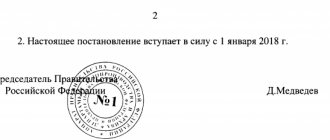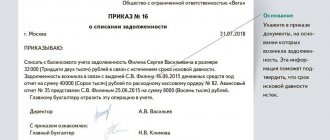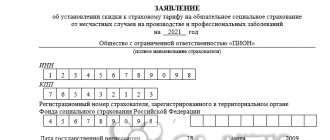Under what circumstances is financial assistance exempt from insurance premiums?
Financial assistance is exempt from insurance premiums in the following cases:
- If one employee is provided with financial assistance in the amount of up to 4,000 rubles within the billing period (subclause 11, clause 1, article 422 of the Tax Code of the Russian Federation).
- If financial assistance is issued at a time as compensation for material damage resulting from emergency circumstances, natural disasters, as well as if individuals suffered from terrorist attacks (subclause 3, clause 1, article 422 of the Tax Code of the Russian Federation).
- If financial assistance is allocated as a lump sum due to the death of an employee’s family member (subclause 3, clause 1, article 422 of the Tax Code of the Russian Federation).
- If financial assistance is allocated to an employee of the organization due to the birth or adoption of a child (subclause 3, clause 1, article 422). Amounts of such assistance must be allocated in the first year after birth or adoption, and the non-taxable limit is set at RUB 50,000. Each parent has the right to receive the above amount (letters from the Ministry of Finance dated May 16, 2017 No. 03-15-06/29546, dated November 16, 2016 No. 03-04-12/67082, Ministry of Labor dated October 27, 2015 No. 17-3/B-521 , dated January 21, 2015 No. 17-3/B-18 (clause 1), dated November 20, 2013 No. 17-3/1926).
For information about what documents are required to receive financial assistance in connection with the birth of a child, read the article “How to apply for financial assistance to an employee?”
Payments under which contracts should not be subject to insurance premiums?
Rewards in favor of individuals are not subject to insurance premiums for various reasons.
Some are simply not subject to taxation, and some were specifically exempted from taxation by the law “On insurance contributions to the Pension Fund of the Russian Federation, the Social Insurance Fund of the Russian Federation, the Federal Compulsory Medical Insurance Fund” dated July 24, 2009 No. 212-FZ (hereinafter referred to as the law No. 212-FZ). However, one should be extremely careful with such payments, since non-accrual of contributions threatens increased attention from regulatory authorities and subsequent on-site inspection (attachment to the letter of the Pension Fund of the Russian Federation No. TM-30-24/13848, FSS of the Russian Federation No. 02-03-08/13-2872 dated 12/21/2010).
https://www.youtube.com/watch?v=ytadvertiseru
We also note that there are payments for which insurance premiums are not charged at all, and there are those that are subject to contributions only to some funds.
Let’s look at which payments are not subject to social insurance contributions.
When concluding agreements on the transfer of ownership of property or on the transfer of property for use, payments under such agreements are not subject to insurance premiums. These can be contracts of purchase and sale, lease of property, or loan. Thus, the following are not subject to contributions:
- interest received by the employee under the terms of the loan agreement concluded between him and the organization;
- material benefit from savings on interest, if, under the terms of the contract, the loan issued to the employee is interest-free;
- a loan or part of a loan repaid under agreements;
- a gift transferred on the basis of a deed of donation.
It should be taken into account that if, if an organization issues a loan to its employee, part of the debt is forgiven, then it will already be subject to insurance premiums (letters from the Ministry of Health and Social Development of Russia dated 05.21.2010 No. 1283-19, dated 05.17.2010 No. 1212-19, FSS of the Russian Federation dated 17.11 .2011 No. 14-03-11/08-13985).
If the terms of the agreements listed above also provide for the provision of services (for example, a car rental agreement is accompanied by the provision of driver services), then questions may arise regarding the amount of services provided.
Previously, officials believed that payment for such services should be subject to unified social tax (letter of the Ministry of Finance of Russia dated July 14, 2008 No. 03-04-06-02/73). And since insurance premiums have, in fact, replaced the single social tax, the likelihood that the position of officials will remain the same is quite high.
For additional exemptions on contributions that may be introduced from 2021, read the article “New benefits on insurance premiums may appear.”
In connection with the holding and organization of the XXII Olympic Winter Games and the XI Paralympic Winter Games in Sochi, volunteers performing their duties under civil contracts incur certain expenses, the reimbursement of which is not subject to insurance premiums in accordance with Part. 6 and 7 art. 7 of Law No. 212-FZ.
We invite you to read: Termination of the MTPL contract in 2021: return of insurance when selling a car and other cases
The legal provisions relating to the 2014 Olympics and Paralympics are applicable for the period from 01/01/2011 to 31/12/2016.
These costs include:
- expenses incurred when processing or issuing visas, invitations and other similar documents;
- costs of travel, accommodation, food, training, communications and transportation;
- expenses for linguistic support;
- the cost of souvenirs with the symbols of the Olympics and Paralympics held in Sochi in 2014.
In addition, the amounts of insurance premiums under insurance contracts that were concluded in favor of these persons are not subject to insurance premiums.
Starting from 06/07/2013, amounts paid in connection with the preparation and holding in the Russian Federation of the 2021 FIFA World Cup and the 2021 FIFA Confederations Cup (Part 8, Article 7 of Law No. 212-FZ, Article 56, Part 1 of Art. 58 of the Federal Law “On the preparation and holding of the 2021 FIFA World Cup in the Russian Federation.”
Such payments are:
- remuneration to foreigners and stateless persons within the framework of labor and civil contracts for the performance of work (provision of services) concluded with FIFA (Federation Internationale de Football Association), the organizing committee of Russia 2018 and subsidiaries of these organizations;
- reimbursement of the following expenses of volunteers incurred while performing their duties under civil contracts concluded with FIFA, the Russia 2018 organizing committee and their subsidiaries:
- expenses for processing and issuing visas or invitations;
- costs of travel, accommodation, food, sports equipment, training, communications, transportation, linguistic support;
- cost of souvenirs with the symbols of the 2021 FIFA World Cup, 2021 FIFA Confederations Cup.
How is the allocation of financial assistance in an organization formalized?
To allocate financial assistance, the manager must issue a special order. An application written in any form is required from the employee who needs help. Supporting documents should be attached to it, which can be a birth or adoption certificate of a child, a death certificate of a family member, etc.
In the payment document, in the column “Base of payment”, the accounting department must indicate the number and date of the manager’s order to allocate financial assistance. If payments are made in tranches rather than in a lump sum, such a link should be included in each payment document.
When financial assistance is subject to insurance premiums
In all other cases not specified in the previous paragraph, financial assistance, if provided to employees, becomes subject to insurance contributions. This norm is contained in subsection. 11 clause 1 art. 422 of the Tax Code of the Russian Federation.
The deadlines for making contributions are as follows: according to clause 3 of Art. 431 of the Tax Code of the Russian Federation, the payer of insurance premiums is obliged to transfer them to the budget no later than the 15th day of the month following the month of accrual.
Example:
The collective agreement of Omega LLC contains a provision according to which employees of the organization have the right to receive financial assistance. The decision to allocate it is the prerogative of the manager, whose order indicates the corresponding amounts.
In February 20XX, an employee of the enterprise, A.S. Chizhikov, in accordance with his application, was provided with financial assistance in the amount of 29,000 rubles. for paid treatment of the spouse during pregnancy.
In May 2020, another financial assistance was allocated to him, but in connection with the birth of a child - in the amount of 30,000 rubles.
As a result, contributions to compulsory social insurance will be charged only from 25,000 rubles. (29,000 – 4,000), since the non-taxable amount in the first case is 4,000 rubles. And financial assistance issued at the birth of a child is not subject to contributions at all, if it does not exceed 50,000 rubles. In this case, it is equal to 30,000 rubles.
For more information about whether financial assistance is subject to tax, and whether there is a chance of not paying insurance premiums with such assistance, see the Ready-made solution from ConsultantPlus. If you do not have access to the K+ system, get a trial online access for free.
Difficult questions when filling out the Calculation of Insurance Premiums
Is it possible to indicate values with a “minus” in the Calculation of Insurance Premiums?
10/11/2017Russian tax portal
Author: Tatyana Sufiyanova (tax and duties consultant)
Let's look at the most exciting questions that accountants ask us when filling out the reporting form - Calculation of insurance premiums.
1) The company operated in the first quarter of 2017; since April of this year, operations have been temporarily suspended, but one employee was paid benefits in connection with the birth of a child (sick leave and a lump sum benefit). How to correctly reflect these amounts in the Calculation and is it possible to reflect negative values? For example, the company did not pay salaries for the second and third quarters of 2021, there were no accruals for insurance premiums, but there were benefit payments. It turns out that there is an excess of expenses.
[email protected] dated August 23, 2017 , negative values are not indicated in the Calculation. The amount of excess expenses for payment of benefits over the amount of accrued insurance premiums is shown in Appendix No. 2 to Section 1 on line “090”. Please look at the drawing. As we can see, there are no negative values on it. The figure shows an example - there have been no salary accruals since April 2021, there were only benefit payments in August and September 2021.
In order to “separate” the values, there is a line order “090”. As the Federal Tax Service writes, in line “090” of Appendix No. 2 to Section 1 of the calculation, the amount of insurance contributions payable to the budget, or the amount of excess of expenses incurred by the payer for the payment of insurance coverage over the calculated insurance contributions for compulsory social insurance in case of temporary disability and in connection with motherhood is always reflected in a positive meaning.
In this case, the sign of line “090” of Appendix No. 2 to Section 1 of the calculation takes on the value:
“1” – the sign is indicated if insurance premiums are payable;
“2” – the sign is indicated in the case when the expenses incurred are greater than the calculated insurance premiums.
2) How to reflect and on what lines the amount of accrued child care benefits until the child reaches 1.5 years of age?
Let us remind you that these benefits are not subject to insurance contributions and they must be shown as amounts not subject to insurance contributions. To do this, go to Appendix No. 1 of Section 1, Subsection 1.1 - on line “030” we show all accrued amounts of income; on line “040” we will show the amount of our benefit, and on line “050” we will reflect the base for calculating insurance premiums (this is the value on line “030” minus the amounts reflected on line “040”). Look at the figure below, it shows the benefit amounts that were accrued and paid to the employee in August and September 2021 (according to the terms of the example, there were no other payments since April 2021).
3) The company issued an interest-free loan to its employee. The employee, accordingly, received a material benefit (saving on interest on the loan). Is such an amount of material benefit included in the calculation of insurance premiums and on what line?
In order to answer this question, let us turn to the provisions of Article 420 of the Tax Code of the Russian Federation. Even if we are not talking about material benefits, but about another type of income, in order to avoid making a mistake, you can always refer to the provisions of the Tax Code. As paragraph 1 of Article 420 of the Tax Code of the Russian Federation tells us, the objects of taxation with insurance premiums are payments and other remuneration in favor of individuals:
1) Within the framework of labor relations and under civil contracts, the subject of which is the performance of work, the provision of services;
2) Under copyright contracts in favor of the authors of works;
3) Under agreements on the alienation of the exclusive right to works of science, literature, art, publishing license agreements, license agreements on granting the right to use works of science, literature, art, including remunerations accrued by organizations for managing rights on a collective basis in favor of the authors of works under agreements concluded with users.
Our material benefit does not relate to the labor relationship. This type of income arose within the framework of civil law relations. But paragraph 1 of Article 420 of the Tax Code of the Russian Federation indicates that insurance premiums are levied on income that was paid under the GPA, the subject of which is the performance of work and the provision of services. But material benefit is not the performance of work or the provision of services. This means that the amount of material benefit will not be subject to insurance premiums.
We do not show the amount of material benefit as part of the Calculation of Insurance Premiums.
4) The company is temporarily not operating; is it necessary to submit a calculation of insurance premiums or not? If necessary, are the details of the company director indicated in section No. 3 of the Calculation?
Yes, the company must submit a calculation of insurance premiums with “zero” indicators. Section No. 3 of the Calculation reflects the personal data of the director (his Taxpayer Identification Number, SNILS, date of birth, passport details).
Section No. 3 consists of subsections 3.1 and 3.2. Subsection 3.1 reflects personalized information, and subsection 3.2 shows information about the amount of payments and accrued insurance premiums. If the company had no activity and no accruals were made, then section 3.2 will not be completed. Article 22.2 of the Procedure for filling out the Calculation of Insurance Premiums tells us this - “In personalized information about insured persons, which does not contain data on the amount of payments and other remunerations accrued in favor of an individual for the last three months of the reporting (calculation) period, subsection 3.2 of section 3 is not filled in."
Conclusion - if the company has insured employees who are on leave without pay, on maternity leave, for whom wages have not been accrued, then section No. 3 is filled out (their full names are entered in subsection 3.1), but subsection 3.2 is not filled out .
5) Is an individual entrepreneur required to report on this form or not?
If an individual entrepreneur works only for himself, he does not have employees under employment contracts, he does not make payments to employees, then he does not fill out the calculation of insurance premiums.
Post:
Comments
Korsakov Sergey
January 24, 2021 at 3:38 pm
Question on Appendix 2 (social fear, test certificate).
How to correctly reflect accruals for GPC: reflect on line 020 (amounts of payments) while simultaneously indicating on 030 (non-taxable)? Or should GPC payments not be indicated in Appendix 2 (social insurance) at all?
Is it necessary to subject insurance premiums to payments made to employees who have already resigned?
In some cases, an organization needs to pay financial assistance to former employees, for example, due to difficult life circumstances. In this case, there is no need to accrue insurance premiums, because the base for calculating insurance premiums includes remunerations paid in favor of individuals subject to compulsory insurance under employment contracts or civil contracts (clause 1 of Article 420 of the Tax Code of the Russian Federation). Since there are no of the above agreements between the former employees and the organization, there are also no grounds for calculating contributions.
The organization issued an interest-free loan to its employee.
Are the material benefits an employee receives from saving on interest subject to insurance premiums?
Having considered the issue, we came to the following conclusion:
The material benefit from saving on interest is not subject to insurance premiums.
Rationale for the conclusion:
According to Part 1 of Art. 7 of the Federal Law of July 24, 2009 N 212-FZ “On insurance contributions to the Pension Fund of the Russian Federation, the Social Insurance Fund of the Russian Federation, the Federal Compulsory Medical Insurance Fund and territorial compulsory medical insurance funds” (hereinafter referred to as Law N 212-FZ) for organizations The object of taxation with insurance premiums is payments and other remuneration accrued in favor of individuals. The material benefit from savings on interest is not a payment and, in our opinion, cannot be considered as remuneration. In addition, even if we consider the corresponding income to be remuneration, it is not produced within the framework of labor relations, a civil contract, the subject of which is the performance of work, the provision of services, and not under an author’s order agreement, an agreement on the alienation of the exclusive right to works of science and literature , art, publishing license agreement, license agreement on granting the right to use a work of science, literature, art.
Under a loan agreement, one party (the lender) transfers into the ownership of the other party (borrower) money or other things determined by generic characteristics, and the borrower undertakes to return to the lender the same amount of money (loan amount) or an equal number of other things received by him of the same kind and quality (Clause 1 of Article 807 of the Civil Code of the Russian Federation). Things, including money, constitute property (Article 128 of the Civil Code of the Russian Federation). By virtue of Part 3 of Art. 7 of Law N 212-FZ do not apply to the object of taxation of insurance premiums, payments and other remuneration made within the framework of civil contracts, the subject of which is the transfer of ownership or other real rights to property (property rights), and contracts related to the transfer to use of property (property rights), with the exception of copyright contracts, contracts on the alienation of the exclusive right to works of science, literature, art, publishing license agreements, license agreements on granting the right to use works of science, literature, art. Since the material benefit from saving on interest arises within the framework of a loan agreement, the subject of which is the transfer of ownership of property, it is not subject to insurance premiums on this basis.
Prepared answer:
Expert of the Legal Consulting Service GARANT
auditor Mashedo Nadezhda
Information legal support GARANT
https://www.garant.ru
Under what conditions are insurance premiums for work-related injuries calculated?
The objects for taxation of contributions for injuries are payments if they are in accordance with paragraph 1 of Art. 20.1 of the Law “On Compulsory Social Insurance against Industrial Accidents and Occupational Diseases” dated July 24, 1998 No. 125-FZ:
- when carrying out labor relations;
- execution of civil contracts, if they contain a clause on the payment of such contributions.
In sub. 3, 12 p. 1 art. 20.2 of Law No. 125-FZ defines the nature of material assistance, which is exempt from contributions for injuries. Contributions are not accrued:
- if financial assistance is issued at a time as compensation for material damage resulting from emergency circumstances, natural disasters, as well as if individuals suffered from terrorist acts (paragraph 2, subparagraph 3, paragraph 1, article 20.2 of Law No. 125-FZ);
- if financial assistance is allocated as a lump sum due to the death of an employee’s family member (paragraph 3, subparagraph 3, paragraph 1, article 20.2 of Law No. 125-FZ);
- if financial assistance is allocated to an employee of the organization due to the birth of a child or his adoption (paragraph 4, subparagraph 3, paragraph 1, article 20.2 of Law No. 125-FZ); the amounts of such assistance should be allocated in the first year after birth or adoption and should not exceed 50,000 rubles;
- if financial assistance was issued for other needs and its amount did not exceed 4,000 rubles. per employee for the billing period (subclause 12, clause 1, article 20.2 of law No. 125-FZ).
Thus, insurance premiums for injuries to employees will not be assessed on medical assistance in the same situations in which other insurance premiums are not charged on it.
Read about the rules for calculating and transferring injury contributions for payments subject to such contributions in this material.
How to financially help an employee without charging insurance premiums and personal income tax
Home — Articles
For reference
The entire amount of financial assistance paid to an employee is not subject to insurance contributions:
- to compensate for damage caused by an emergency or natural disaster;
- due to the death of a family member;
- at the birth (adoption) of a child, during the first year after birth (adoption), but not more than 50,000 rubles. for each child.
Let us note that if we abstract from the norm of clause 11, part 1, art. 9 of Law N 212-FZ, which exempts only material assistance in the amount of 4,000 rubles from the calculation of contributions. per year, then based on other provisions of Law N 212-FZ, we can come to the conclusion that any material assistance, the payment of which is not provided for by the employment contract, does not form an object of taxation with insurance contributions. Despite the fact that personal income tax should be withheld from amounts of material assistance exceeding 4,000 rubles. per year per employee, in any case it will be necessary, regardless of whether such payment is provided for in the employment contract or not. However, most likely, extra-budgetary funds will not agree with this interpretation of the provisions of Law N 212-FZ. Therefore, you can be guided by this position only if you are ready to defend it in court. Now let’s look at more or less safe ways to provide an employee with financial assistance in an amount greater than 4,000 rubles, which allows you to not lose much on “salary taxes.”
Method 1. We issue an interest-free loan and do not require its repayment
In this case, both benefit: the employee receives financial support, and the employer does not pay insurance premiums. In addition, personal income tax on material benefits for using an interest-free loan does not need to be calculated, since the date of receipt of such income, according to the Ministry of Finance, is the date of repayment of the borrowed funds. This means that if the employee does not return the money, then he will not have any income.
By the way, some experts believe that there is no need to calculate personal income tax on savings on interest for using an interest-free loan. The fact is that the date of receipt of income in the form of material benefits from savings on interest is the day of payment of interest on loans received. And for cases of receiving an interest-free loan, the date for receiving income from savings on interest is not determined by the Tax Code. The inability to determine the date on which income is considered received entails the impossibility of determining the refinancing rate necessary to calculate the tax base. It turns out that the procedure for calculating personal income tax on such income of the Tax Code is not defined. This means that the tax on this income should be considered unspecified.
Of course, without withholding personal income tax on material benefits from interest-free loans, the tax agent risks encountering objections from inspectors. But in our situation there is no such risk, since it is initially assumed that the employee will not repay the loan.
Although, of course, the employee runs the risk that the employer, for some reason, may demand the return of the “material assistance” issued in this way. However, such risks exist only until 3 years have passed from the date determined as the loan repayment period. And after these 3 years, the organization will be able to take into account the amount of the unrepaid loan in tax expenses.
Let's summarize:
(+) insurance premiums are not charged on the loan amount;
(+) inspection authorities are unlikely to make claims;
(+) Personal income tax on material benefits for using an interest-free loan and on the amount of the loan itself is not calculated.
Method 2. We pay financial assistance to an employee’s family member
The object for calculating insurance premiums is payments to individuals under employment and civil law contracts. Consequently, if financial assistance is paid not to the employee, but to a member of his family, the object of taxation by insurance premiums does not arise.
Here are the pros and cons of this option:
(+) insurance premiums are not charged for financial assistance paid to the employee’s family members;
(+) there will be no claims from inspectors;
(-) on financial assistance paid to members of the employee’s family, personal income tax must be calculated and withheld and information about the income of these individuals must be submitted to the tax authorities using Form 2-NDFL.
Method 3. We draw up a money donation agreement
The object of taxation of contributions is not recognized as payments under agreements the subject of which is the transfer of ownership of property. And from the point of view of the Civil Code of the Russian Federation, money is the same property as, say, a telephone or a car. Consequently, if the transfer of money to an employee (or a member of his family) is formalized by a gift agreement, then such payment will not be subject to contributions. However, the possible risks of controller claims must be taken into account. After all, giving money to employees is a rather exotic operation that will definitely attract their attention.
As a result:
(+) insurance premiums are not charged on donated money;
(-) the cost of gifts is subject to personal income tax in an amount exceeding 4,000 rubles. per year per employee (or member of his family);
(-) there may be claims from inspection authorities who will claim that the payment of money is nothing more than a payment of material assistance.
Method 4. We rent property from an employee
Payments under contracts related to the transfer of property (property rights) for use are not subject to insurance premiums. And this can also be used if necessary to help an employee with money. For example, by renting any property from an employee that can be used in the organization’s activities. The amount of rent is established by agreement of the parties and is fixed in the contract. True, more or less significant amounts can only be paid when renting cars and premises, but not every employee has such property and is not always necessary for the organization.
Pros and cons of this option:
(+) insurance premiums are not charged on rent;
(+) rent reduces taxable profit;
(-) personal income tax will have to be withheld from the entire rent amount;
(-) the employee does not always have something that the organization can rent.
* * *
As you can see, there are many options to support the employee and save on contributions. And yet the safest option is to pay a premium instead of financial assistance. You can always find a reason for this. And although you will have to calculate contributions and withhold personal income tax, you can take all these amounts into tax expenses without any risks.
Optimization of insurance premiums, Insurance premiums, personal income tax
Individual entrepreneur: payment by the entrepreneur of insurance premiums in the amount of 1% for himself
Insurance premiums for injuries from 2021
Simplified: using a general and reducing insurance premium rate
Amounts not subject to insurance premiums
Insurance premium rates in 2013
Financial assistance in connection with the death of a close relative in 2020–2021
Separately, it is necessary to say about financial assistance in connection with the death of a close relative in 2020–2021.
The fact is that the employer can list in the salary regulations the immediate relatives of employees, in the event of whose death the employee is paid financial assistance. For example, this could be a spouse, children, parents, grandparents, parents-in-law, brothers/sisters. However, the procedure for assessing financial assistance with insurance premiums depends on whether the deceased relative was a family member or not.
Financial assistance in connection with the death of a close relative in 2020–2021 is not subject to insurance premiums only if these close relatives are family members within the meaning of Art. 2 of the Family Code of the Russian Federation (see letter of the Ministry of Labor of Russia dated November 9, 2015 No. 17-3/B-538). In this article of the Family Code, only the spouse, parents (including adoptive parents) and children (including adopted children) are considered family members. So if an employer pays financial assistance in connection with the death of, for example, a grandmother or parents of a spouse or brother/sister, then this financial assistance will be subject to insurance premiums in the general manner.
Legal basis
Previously, in letter No. BS-4-11/8019 dated April 26, 2021, tax officials noted that payments under the loan agreement are not subject to insurance premiums. Because its subject is neither the performance of work nor the provision of services.
We invite you to read: Deadline for submitting documents to the insurance company after an accident under compulsory motor liability insurance
If the employer decides to terminate the employee’s obligation to return funds under the loan agreement, the amount of the unrepaid debt is not subject to insurance premiums on the basis of clause 1 of Art. 420 Tax Code of the Russian Federation.
https://www.youtube.com/watch?v=https:accounts.google.comServiceLogin
In addition, there is no object for insurance premiums within the framework of GPC agreements, the subject of which is the transfer of ownership or other proprietary rights to property (clause 4 of Article 420 of the Tax Code of the Russian Federation).
Financial assistance 4,000 rubles: taxation 2020–2021
And a few more words about the taxation of material assistance up to 4,000 rubles. Financial assistance 4000 rub. — taxation in 2020–2021 does not provide for its inclusion in the income taken into account when determining the tax base for personal income tax (clause 28 of article 217 of the Tax Code of the Russian Federation).
Find out more about in which cases financial assistance is subject to personal income tax and in which it is not, in ConsultantPlus. To do everything correctly, get trial access to the system and go to the Ready solution. It's free.
For the purposes of calculating income tax, material assistance to employees does not reduce the tax base (clause 23, article 270 of the Tax Code of the Russian Federation). At the same time, the Russian Ministry of Finance allows the accounting of financial assistance paid for vacation as part of labor costs. For income tax purposes and under the simplified tax system:
- financial assistance paid for vacation is taken into account in labor costs if its payment is provided for in an employment (collective) agreement or local regulation and is related to the employee’s performance of his job duties (clause 25 of article 255 of the Tax Code of the Russian Federation, subclause 6, clause 1 , clause 2 of Article 346.16 of the Tax Code of the Russian Federation, letters of the Ministry of Finance of Russia dated September 2, 2014 No. 03-03-06/1/43912, dated October 22, 2013 No. 03-03-06/4/44144, dated September 24, 2012 No. 03- 11-06/2/129);
- financial assistance paid for other reasons is not taken into account in tax expenses (clause 23 of article 270, clause 2 of article 346.16 of the Tax Code of the Russian Federation).
Read more about this relationship in the article “How does financial assistance to employees affect income tax?”
How insurance premiums are saved by forgiving loans to employees
MAIN THINGS IN THE ARTICLE
Material benefits from savings on interest are not subject to contributions. It is safer not to formally forgive loan debt.
You can withdraw part of the payments from the insurance premium base by issuing them as a loan. The loan is not subject to fees, because it is not related to labor relations, performance of work or provision of services (Part 1, 3, Article 7 of Federal Law No. 212-FZ of July 24, 2009). Experts and officials assessed the safety of savings.
When is it profitable to replace payments with a loan?
Unlike labor costs, a loan issued cannot be taken into account in expenses when calculating income tax (Clause 12, Article 270 of the Tax Code of the Russian Federation). This means that it is more profitable to arrange payments through a loan, which the company does not risk recognizing in tax accounting. For example, financial assistance, compensation for a resigning employee, or allowance for a newcomer.








